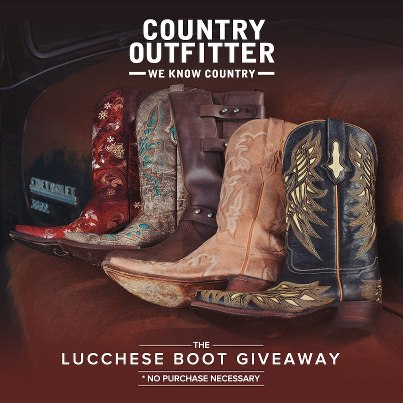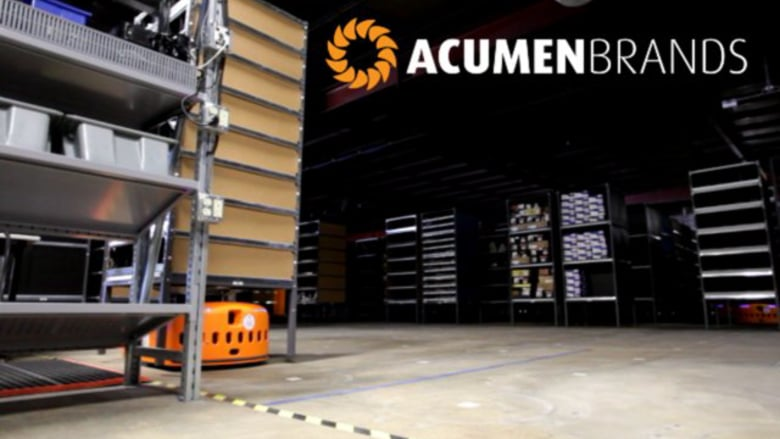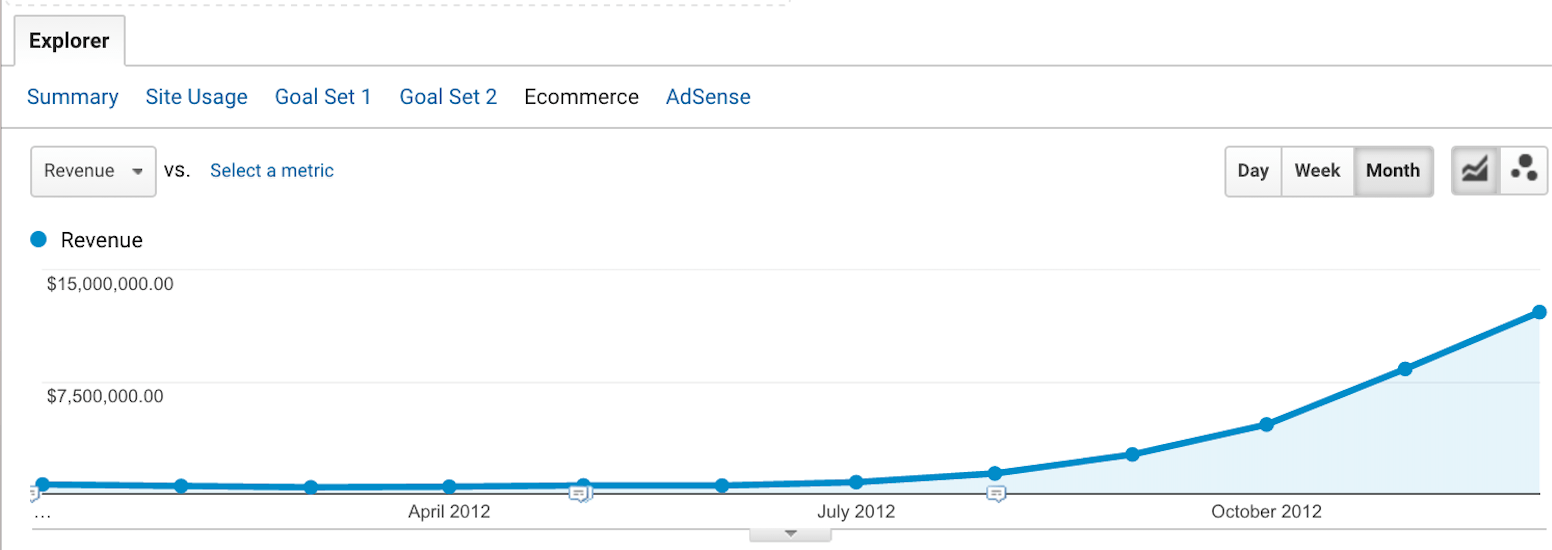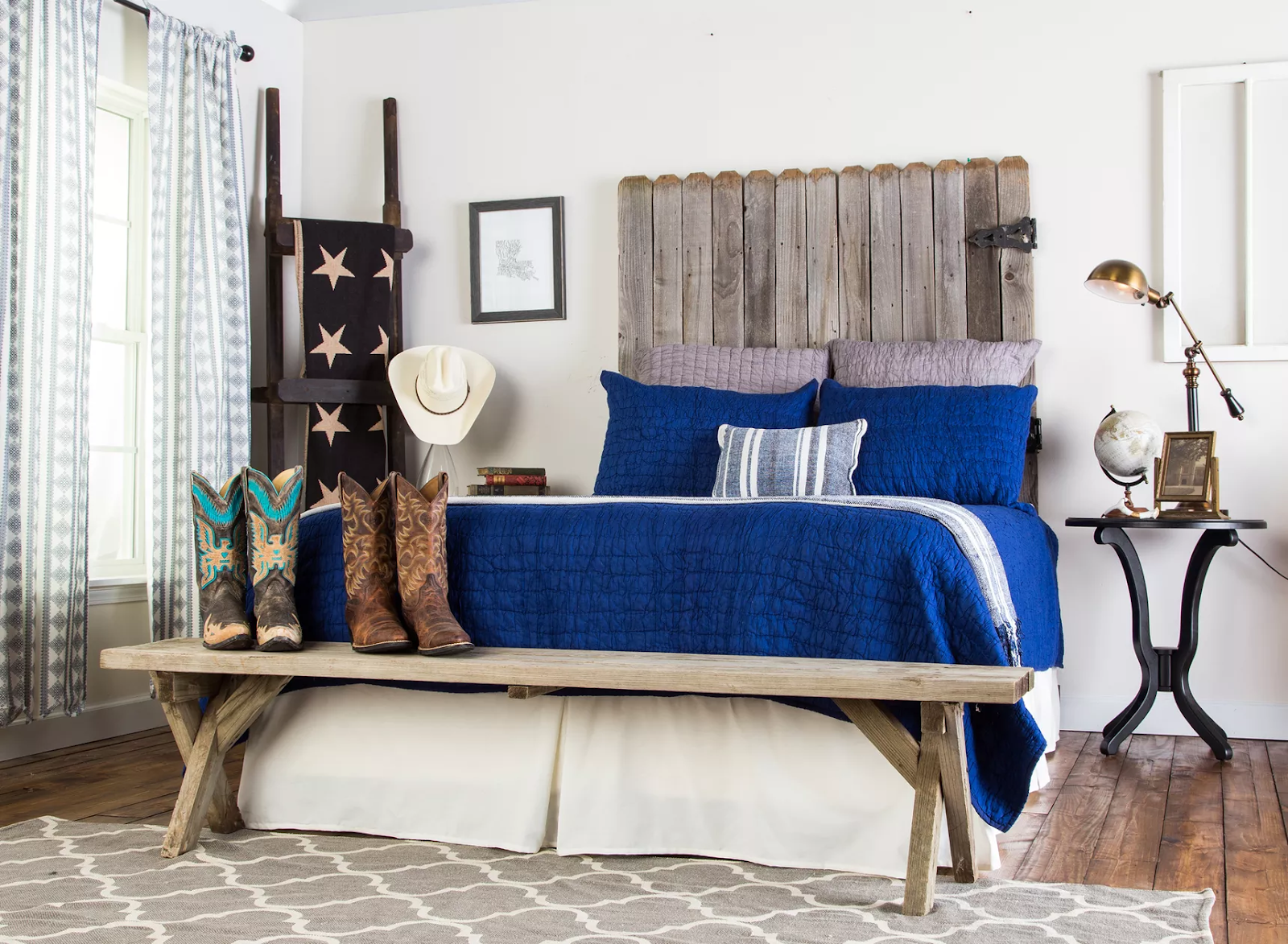$100M/Year to Shut Down: The Rise and Fall of An E-Commerce Empire
Hello! Who are you and what are you working on?
I’m John James, I’m currently the CEO of Engine, a new cloud hosted ecommerce platform.
In this interview, however, I’m sharing the story of how I started my previous business, Acumen Brands.
I’ll share how we started, how we acquired a nine million Facebook fans in 90 days for one of our brands, how we leveraged that success to raise $100 million in venture capital in middle-of-nowhere Arkansas, and how the business ultimately failed spectacularly after being acquired.
I’m excited to share the story about how an ex-physician (me) and an ex-lawyer built a automated robotic warehouse to support a few dozen online stores, and how one of the stores (Country Outfitter) exploded into a hundred million dollar retailer of cowboy boots in less than six months, despite the fact that neither of the founders owned a single a pair of cowboy boots.

What's your backstory and how did you get into ecommerce?
Acumen Brands was founded on January 1, 2009, at the height of the financial crisis.
From doctor to entrepreneur
At that time, I already had well over decade of ecommerce experience. I founded my first ecommerce business from my college dorm room in 1995, and the proceeds from selling quiz bowl questions and study aids on the early internet financed my medical school education.
In 2001, while working 100 hour weeks during the intern year of my Family Practice residency, I started my second business one night when I was on call in the hospital. It was perhaps the only slow night of call in my three years of residency, and I took advantage of the quiet time to build Grillstuff.com.
My brother and I were partners in that business, and we hoped to hit $30,000 in revenue in 2002. If memory serves, we beat our 2002 forecast by nearly 100x, and we even had a $30,000 DAY at the end of that year!
Taking advantage of Google
The arbitrage of the nascent Google Adwords keyword platform was pretty incredible in the early days. At that time, you could achieve first position in the search results for a few pennies or a nickel on super competitive keywords.
We dominated search for grilling related keywords, allowing us to scale quite quickly. The unbelievably cheap marketing allowed us to bootstrap that business to eight figures of revenue without taking investment capital. Excluding the $49 “investment” we made into building a Yahoo Store, we were profitable from day one.
The advent of Acumen Brands
I sold that business in 2008, and almost immediately started Acumen Brands.
I started Acumen after reading an article in Harvard Business Review stating that in times of recession / depression / financial crisis, businesses that double down on their marketing spend gain a disproportionate amount of market share. Paradoxically, starting my second business right after 9/11 and my third during the 2009 crisis was quite fortuitous.
With Acumen Brands, we set out to build several dozen online stores in several different verticals. We built our own ecommerce software platform, and launched a couple dozen stores in different niches including medical scrubs, workwear, outdoor gear, dance wear, cowboy boots, and several others.
We didn’t know it at the time, but as I’ll explain, one of our stores, Country Outfitter, would grow an order of magnitude larger than the other stores and change our lives in the process.
Describe the process of launching these online stores and running this while operation.
At the time, I described our business as “a marketing plan in search of products to sell.”
We had a cutting edge ecommerce platform that plugged into Google (and eventually Facebook and email marketing) quite well, and we had an SEO and SEM expertise that was light years ahead of many of our eventual competitors.
We were agnostic to industry, and find our target markets, we started with a data driven approach to keyword research.
We were looking for mid to high volume search terms with a good deal of purchase intent. Once we found those keywords, we further narrowed our scope to industries that didn’t have an established online category killer brand - we didn’t want to sell books against Amazon, electronics against Best Buy, or even fishing supplies against Bass Pro Shops and Cabela’s.
Additionally, we were looking for items that could be shipped easily, that had big gross margins, and weren’t sold online directly by their manufacturers.
We found a few dozen candidates, and we started building stores.
After building the first two, a medical scrubs brand and a workwear brand, we raised $3.75 million of venture capital -- the first round of VC in Arkansas in over a decade.
With that capital we installed a Kiva robotic fulfilment system, and launched a new store every couple weeks, growing to around 20 stores very quickly.
Building our own software
Before we could open our first store, we needed software. We spent about 6 months building the first version of our custom ecommerce platform, and spent the next 6 years improving the product.
The learnings from managing a few dozen of our own stores on our own platform eventually led to Engine, the ecommerce platform we’re building today. My old CTO (and great friend) Jim Kane was Engine’s co-founder, and we’ve hired several of the best engineers from our old team.
Building a fulfillment center
In addition to software, we also needed a world-class fulfillment center to pick, pack, and ship our orders. With the help of Kiva Systems and their robots, we designed and built one of the world’s most efficient split case fulfilment centers in a very short period of time - 96 days from start to finish, Kiva’s quickest install by nearly a year.
Here’s a picture of the robots in our old warehouse:

How did you attract and retain customers?
We scaled from $3 million to $5 million to $9 million in revenue in our first three years, largely on the back of our “harvest demand” strategy driven by Google keyword marketing. We would open a new store, adding new keywords to the mix, and revenue would follow albeit slower than we wanted.
Unlike the business I started in 2001 where clicks were super cheap, in 2009 Google Adwords was just beginning to get cost prohibitive for a startup. If we were going to scale quicker, we needed another nascent ad platform to arbitrage.
Taking advantage of Facebook
By arbitraging Facebook’s nascent ad platform, we were able to grow on of our stores, Country Outfitter, a retailer of cowboy boots, beyond our wildest expectations.
The opportunity was enormous. Whereas there were only 135,000 searches each month for cowboy boots on Google, we could reach 18.2 million potential cowboy boot wearers on Facebook by targeting people who liked country music, horses, and rodeo on Facebook.
The majority of those 18.2 million women owned a pair of cowboy boots, and we knew many of those would buy another pair in the near future.
We tried dozens of tactics, but the strategies we used on Google simply didn’t work on Facebook. Unlike Google where retailers could harvest pre-existing demand exposed by keyword searches, Facebook users weren’t in the buying mood. Rather than “harvesting” demand, we had to “create” demand.
Harvesting demand is relatively easy and logical. We’d first acquire a click from one of 135,000 searches a month for cowboy boots, then we’d land the shopper on a page containing all our cowboy boots, and sales followed linearly.
A different strategy with Facebook
The strategy we used to crack the Facebook code was counterintuitive.
Rather than sell boots directly on the first visit, we changed our goal to get multiple visits from the same visitor, and make the first sale over time.
The goal of the first visit was simply to establish a relationship with the customer. To ensure multiple visits without having to pay Facebook multiple times, we required the visitor to “join” the site by subscribing to our email list and becoming our fan on Facebook.
Giveaways and a viral loop
We enticed the visitor to subscribe to our email by entering them into a giveaway to win a $500 pair of cowboy boots.
After they entered their email address, we asked them to become our Facebook fan, and share the giveaway with their friends. After completing that 1-2-3 step process, they unlocked a 20% discount.
While more than half the people declined our invitation to “join,” the visitors who did would come back an inordinate amount of times. They’d come back every week to enter our next weekly giveaway, and eventually they’d purchase a pair of boots.
Each weekly giveaway had over a million entrants, and Country Outfitter would routinely have 10 million site visits a month.
Due to the viral loops described above, Country Outfitter became ubiquitous on Facebook. We held our first giveaway on Labor Day 2012, and by the end of that year
we had acquired 9 million fans and 11 million email subscribers.
Amazingly, 8% of those 11 million giveaway entrants eventually purchased a pair of cowboy boots from us, leading to a $100 million annual revenue run rate. Through the process, Country Outfitter’s revenue grew from just $100,000 / month to a $14.5 million month just six months later.

Converting 8% of 11 million giveaway entrants into paying customers was an exhilarating challenge.
Email marketing flows
With 11 million email subscribers, we had to immediately shift away from a “batch and blast” email marketing strategy, quickly migrating to a much more efficient system of “event driven” marketing flows.
Rather than flood our customer’s inboxes with unsolicited spam, we constructed dozens of automated marketing cascades that were tailored to the activity and interest of individual shoppers. If USER X does EVENT Y then they receive MARKETING FLOW Z customized to their known interests.
These automated cascades increased our ecommerce email CPM by 1000%. Updated learnings and processes gleaned from optimizing these flows are my favorite feature of Engine’s new ecommerce platform.
What took a team of 20 developers to build and execute is now available right out of the box on Engine.
What caused the company to fail?
To get to today, you have to run through several failures, and a couple great successes.
While we succeeded in generating a fantastic return for our Seed, Series A, and Series B investors and achieved a life-changing partial exit for the founding team, we fell far short of our goal of building a publicly traded company. The cause of “failure” was multifactorial.
Stepping down as CEO
18 months after selling a majority of Acumen Brands, I stepped down as CEO. The company had morphed from a retail marketing technology company to a retailer of cowboy boots that was attempting to become a manufacturer as well. I was over my head, and out of my sweet spot, so I left. After I left, the company lost their CTO and vital growth marketing talent as well.
Competition
The company failed spectacularly after losing that talent, but the writing was already on the wall when we left: Amazon (and Zappos) started moving heavily into our space, the brands we sold started their own websites and started selling direct, our biggest competitor went public, and most importantly Facebook’s organic reach algorithm changed dramatically and bid prices increased exponentially.
The fall from grace was nearly as swift as the ascension.
Facebook Algorithm Changes
With a series of algorithm changes, Facebook rendered our 9 million fans worthless. Whereas our organic reach initially hovered around 56%, it dropped quickly to well under 1%.
Where over 5 million fans would see our posts for free in the beginning, after the algorithm changes, only 50,000 fans would see an average post.
Switching from our custom built platform
The death knell, however, was the new owner’s decision to switch off our powerful, custom-built ecommerce platform to Demandware. The day of the platform switch, conversion rates dropped 38%, and never recovered.
The business assets were eventually sold to our largest competitor for pennies on the dollar - a competitor we contemplated buying out just a couple years earlier.
Changes in the ecommerce industry
Through watching that decline, as well as watching the high profile implosions of similar high-flyers like Gilt Groupe and One Kings Lane, I’ve realized that the future of ecommerce looks decidedly different than the beginnings.
As we found out on Country Outfitter, selling other manufacturers goods like a traditional retailer is largely a fool’s errand today -- Amazon’s already won that game, Wal-Mart is a clear second, and several great companies like Nordstrom are fighting for a distant third.

Customer relationships and brand power
The ecommerce companies that are winning today, and will win in the future, all have a direct relationship with their customer. The majority of those will be high margin, vertically integrated direct-to-consumer companies.
While we did almost everything right, we found out the hard way that customer loyalty lies mainly with the brand they are purchasing, not the retailer. In today’s post-Amazon world, retailers are largely “dumb pipes” - supply chains utilized by consumers to get the products from their chosen brands in the most efficient way possible.
Customers are increasingly agnostic to where they buy their favorite brands, but remain highly brand loyal.
This brand loyalty, and the unprecedented ability to reach new customers online presents an exciting opportunity. Bonobos, Harry’s, Casper, Glossier, and others are the new breed. These digitally native, vertically integrated brands sell directly to their customers, bypassing the costly wholesale distribution network of traditional retail.
Even mighty Wayfair sees the writing on the walls, and is quickly moving away from a traditional wholesaler/retailer relationship by launching their own brands like Birch Lane.
We’re building Engine to help that next generation of direct-to-consumer brands build and monetize that customer relationship.
It starts with a beautiful content+commerce experience designed to be shoppable on today’s mobile devices, and it ends with the ability to directly communicate that content to customers in a highly relevant, customizable way that is not dependant on leveraging external platforms like Facebook and Google.
Through starting the business, have you learned anything particularly helpful or advantageous?
I learned humility, how to deal with failure, and most importantly how to place my faith and family first.
It was easy to get a big head when my picture was on the front page of local business publications every couple weeks, and speaking at national conferences. I became the face of startup success in Arkansas, and I must admit that the notoriety went to my head.
Just a few months after selling the business, it started to unravel and we suffered through a round of layoffs. I eventually stepped down as CEO just 18 months after selling the majority of the business at a 9-figure valuation.
These public failures knocked my ego down several pegs, and I hope that I’m a little easier to work with today than I was when I was younger. I took success for granted, and this time around I’m savoring every small victory as a God-given blessing.
Most importantly, I learned how to be a better leader in my own family. During my residency and up through building Acumen, I sacrificed both the health of my family and my own health to solely focus on building a great business.
While I still think about business the vast majority of my waking hours, I’m 1000% more present with my family. As an example, I have three children in athletics, and I haven’t missed a single game in the past three years - even the afternoon games that take place during office hours. This was a conscious decision, and it’s the best decision I’ve ever made.
Along with that decision, I am diligent about taking care of my own health. During the most stressful period of building Acumen, I contracted a rare stress-related illness known as Ramsay Hunt Syndrome. I was incapacitated for an entire month, and nearly permanently lost my voice and ability to swallow.
This brush with mortality served as a dramatic wake up call. 100 hour work weeks were the norm for me then, and now they are much less frequent though still occasionally necessary.
What platform/tools do you use for your business?
At Acumen, we built all our own software to run our stores. The learnings from this process were the genesis of Engine.
Funny enough, in my role as an investor running an ecommerce startup studio, I recommended Shopify to dozens of entrepreneurs and even used it in a couple of our portfolio companies.
While I still believe Shopify has an incredible product for ecommerce brands that are just starting out, my tune changed dramatically after watching several of our Hayseed Ventures portfolio companies and entrepreneurs I mentored struggle with scaling on their technology.
They all ran into a ceiling at about a million dollars of annual revenue, and universally had the same challenges that simply couldn’t be eradicated on Shopify’s platform.
Closest to home, we watched the technology struggles of our first investment, Menguin. They struggled mightily with their technology, and we decided to build Engine to solve many of the problems they encountered.
They eventually figured out their technology and sold for $25 million to the founder of Men’s Warehouse, but the lack of flexibility in off-the-shelf ecommerce platforms nearly cost them their business. The story is pretty incredible - read about how they did it here.
We had previously solved those problems in Acumen’s homegrown software, and we contemplated purchasing the old software as a basis for Engine, but (wisely) started from scratch. Shopify and Magento were started in 2006, and we wanted a fresh new stack leveraging today’s mobile-first technology.
What have been the most influential books, podcasts, or other resources?
Rework by Jason Fried is my all time favorite, it’s short, quick and impactful. Measure What Matters by John Doerr is the best book I’ve read this year, we’ve adopted OKRs at Engine, and this book was quite influential in helping establish the process.
I love the Masters of Scale podcast by Reid Hoffman.
And I always start my day on Google News then Hacker News. Then I breeze through Techcrunch and Venturebeat, mainly to stay on top of the ecommerce industry. I typically command click any story I want to read on those four site, and open a couple dozen tabs of stories that I want to read.
Despite the recommendations above I don’t read a ton of startup related content. I read a book or so each week, but rarely are they the traditional fare of startup CEOs. I only read non-fiction, and mainly consume a lot content from other fields. Physics, blockchain, finance, genetics, astronomy, medical research, etc.
I’ve found through the years that learning the fundamentals of other disciplines is highly transferable to innovating in your chosen profession. For instance, I first learned the concept of arbitrage from a finance book I picked up… I applied that external knowledge to the nascent ad platforms of Google and Facebook and did quite well arbitraging the pricing inefficiency.
Advice for other entrepreneurs who want to get started or are just starting out?
Just Go. Seriously, just start. Today.
Ready, Aim, Aim, Aim, Aim, Aim, Aim is not the best way to build a startup. You have to abandon your fear, get outside your comfort zone, and not be afraid of failure. I completely agree with Reid Hoffman from over a decade ago - if you aren’t embarrassed by the beta version of your product, you didn’t launch it fast enough.
Run full steam ahead, create some chaos, then learn from the mistakes and iterate quickly.
To be successful, you must have a few strokes of good luck. Just staying in the game, and being in business long enough for that luck to take hold is a large part of outsized success. I will say, however, that luck seems to be distributed quite unevenly, and it seems to follow the most prepared individuals and companies more often than not.
I’ve made more mistakes than you can imagine, but as Mark Cuban said in 2005, in business, you only have to be right once.
Are you looking to hire for certain positions right now?
Yes! We are closing our next round of funding, and have 18 engineering positions and 12 sales / marketing positions open at the current time.
We are specifically looking for Ruby on Rails and JS developers. We have offices in Fayetteville, Arkansas and Denver, Colorado - two of the five best places to live in the entire country according to CNBC and US News & World Report.
Where can we go to learn more?
Visit EngineCommerce.com, email me at [email protected], or follow me on Linkedin.

- 4,818 founder case studies
- Access to our founder directory
- Live events, courses and recordings
- 8,628 business ideas
- $1M in software savings

- 4,818 founder case studies
- Access to our founder directory
- Live events, courses and recordings
- 8,628 business ideas
- $1M in software savings

- 4,818 founder case studies
- Access to our founder directory
- Live events, courses and recordings
- 8,628 business ideas
- $1M in software savings

- 4,818 founder case studies
- Access to our founder directory
- Live events, courses and recordings
- 8,628 business ideas
- $1M in software savings

- 4,818 founder case studies
- Access to our founder directory
- Live events, courses and recordings
- 8,628 business ideas
- $1M in software savings

- 4,818 founder case studies
- Access to our founder directory
- Live events, courses and recordings
- 8,628 business ideas
- $1M in software savings

- 4,818 founder case studies
- Access to our founder directory
- Live events, courses and recordings
- 8,628 business ideas
- $1M in software savings

- 4,818 founder case studies
- Access to our founder directory
- Live events, courses and recordings
- 8,628 business ideas
- $1M in software savings